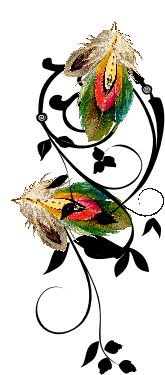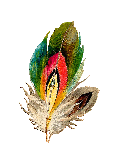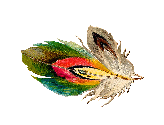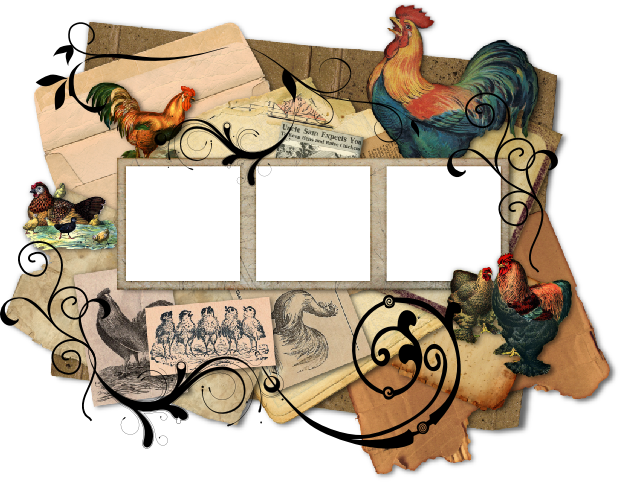
Wild birds and chickens are all birds, and other than the different foods they eat and the way the process it, basically a bird is a bird is a bird. See the rest of my chicken site for more info that isn't covered here. The belief that a mother bird will reject a baby bird that you have handled because ‘she can smell the scent of humans’ is a MYTH. Baby birds and unbroken eggs can be returned to their nest with no danger of their parents rejecting them.
Keep the baby bird in a cage, protected from drafts, with a small heating pad set
on 'low', with a fabric cover or a thin towel between baby and pad-
15 minutes if eyes are not open.
30 minutes if the eyes ARE open.
45 minutes if they off their hocks and standing on their own.
2 hours if they are old enough to be out of the nest. The bird MUST be eating adequately on it's own before you wean it off the baby bird food.
You MUST feed a baby bird what that particular species naturally eats! Trying to feed a sparrow hummingbird food or vice versa isn't going to work, you will kill it. Know what kind of bird you have before attempting to feed it! Baby birds will peep when hungry and after they catch on that your fingers mean food, may flap their wings, fluff up their head feathers and 'gape' for you (open their mouths).
For baby birds such as sparrows, finches, pigeons and doves, if you can get some
baby bird food/handrearing formula (powdered) at the pet store that's great. In the
meantime or if you can't, go to the grocery store and get 1 jar each of the stage
1 baby food (strained, no chunks) of chicken (or turkey or beef), carrot (or other
orange veg) and peas (or other green veg). NOT the 'dinners' food, you want the plain,
straight stuff. Also get a box of Gerber mixed cereal for babies, and a bottle of
unflavored Pedialyte. Mix the cereal with the Pedialyte to paste consistency, then
add a bit (about 1/2 tsp. each) of the meat & veg baby foods. Heavy on the meat is
good. Mix thoroughly in a small dish to a pudding consistency and heat it a bit,
you want it JUST a bit warmer than your skin-
Wild Birds
Handfeeding Baby Birds
Handfeeding Baby Birds

Velvet Sparrow
On this page I’ll offer info on how to care for wild birds–NOT chickens. If you decide to care for a wild bird, know what kind it is BEFORE you feed it–different species have radically different nutritional needs, and feeding a baby bird the wrong kind of food can kill it. Your absolute best choice is to find a qualified wildlife rehabilitation professional.
Some native species are illegal to possess unless you are licensed to do so. Birds of prey, even young ones, can SERIOUSLY INJURE YOU and should not be touched at all–call a professional raptor specialist!
Now-
Grasp the WARM baby in your hand and gently touch the gape flanges (the rubbery yellow areas at the corners of the beak) with the syringe tip. This should prompt it to open it's beak and allow you to GENTLY squirt a tiny amount of WARM food into it's beak. If it won't open it's beak, you'll have to gently pry it open and put the syringe tip in. It's REALLY easy to drown a baby in food using a syringe, so be very careful.
I just put a tiny amount in the baby's mouth and allow THEM to swallow it rather
than risk them aspirating the food. Give them a moment between bites to swallow and
breathe. First morning feedings take the longest, the baby is going to be lethargic
(and possibly resistant to taking food from you at first)-
If food starts to back up inside his mouth and he's still gaping, stop feeding him, he's full!
When they get old enough to begin eating on their own, scatter some seed or their
other adult food of choice in the bottom of their cage where they can get to it freely
and also in a dish, and add a small water dish (one they can reach easily and not
drown in) or water bottle to their cage. In between feedings they should naturally
get curious and begin to pick at the adult food on their own, and start eating. It
only takes about a week for them to lose interest in baby food, refuse handfeeding
and start eating full-
HUMMINGBIRDS– Get some standard commercial hummingbird food at the grocery store–Perky Pet makes one that has needed protein in it. Adult hummingbirds eat tiny insects in addition to nectar, baby hummers need protein, too. As before, make sure baby is warm. Get a feeding syringe as mentioned above–no needle–and fill it with room temperature hummingbird food. Offer the syringe to baby, if he gapes touch a TINY drip to the end of his beak and allow him to swallow. He’ll catch on quick and soon learn to eat from the syringe when it is offered.
Injuries To Downed Baby Birds
Many times there is a reason baby birds are out of the nest too soon-
Many baby birds have a natural fear of huge things like humans and figure that the
ONLY reason you are approaching is to eat them-
Injuries to a baby that has fallen from a high nest to a hard surface below may not
always be apparent. Internal injuries especially. If you do rescue a baby, observe
it to see how it is acting-
Another thing to be aware of is parasites, usually external, in the form of mites.
Mites can drive a baby from the nest early and look like tiny, crawling specks, usually
reddish in color. Look at your hands closely after handling the baby to see if there
are any on your skin. You can also place baby on a white paper towel for about 20
minutes, then lift baby away and look at the towel-
IMPORTANT-
The best thing (and you DO want to do the best thing for the baby, don't you?) is
to find a qualified wild bird rehabilitator near you and turn the baby over to them.
They not only have special training in how to care for wild birds, they are LEGALLY
allowed to have the bird in their possession-
Speaking of the government, they are exceptionally humorless when it comes to any unlicensed & untrained Tom, Dick or Harry messing about with native, protected birds–as they should be. You can earn yourself some hefty fines and serious legal problems by keeping certain species without being a licensed rehabber, so don’t risk it.
Jake, my House Sparrow, on the day I found him in my driveway. He had fallen from his nest and had an injured leg.
Jake giving a fine example of gaping, the instinctive, universal baby bird ‘Feed me!’ signal. You can see the yellow gape flanges at the corners of his beak. As the baby gets older, these fade.
Jake 7 days later, a little more feathered and his gape flanges beginning to fade. You can see that his crop is full in this photo, he’d just been fed.
Jake grew to be a fine, beautiful male House Sparrow other than his gimpy leg, and lived with us for many years until he passed of natural causes at age 7.
Although he never did approve of me being on the computer when I could be paying attention to him, and would fly over and bite my fingers.
My husband found this injured pigeon fledgling one freezing night. He had an injured leg and could not stand. Even though he was older, we were successfully able to handfeed him for the small amount of time he needed it and his leg healed up perfectly.
My daughter named him Pidge, and he grew up to be quite a pretty boy and a surprisingly fun, active, sweet, friendly and endearing pet. He and my daughter are inseparable.
Pidge does have a thing for newspaper and loves to play in it. Here he has thrust his head and body through a tear in the paper and is wearing it, obviously in his dreams he is a peacock.
Pidge frequently plays with crumpled newspaper, making himself a little tunnel in it and cooing away, perfectly happy.
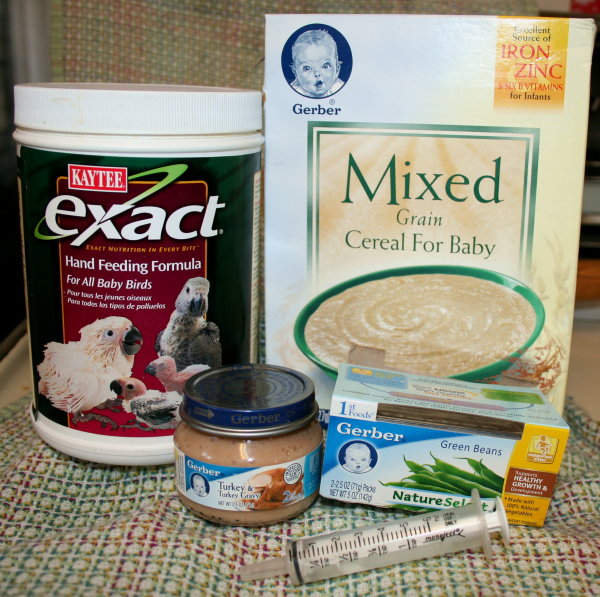
Jack’s Henhouse
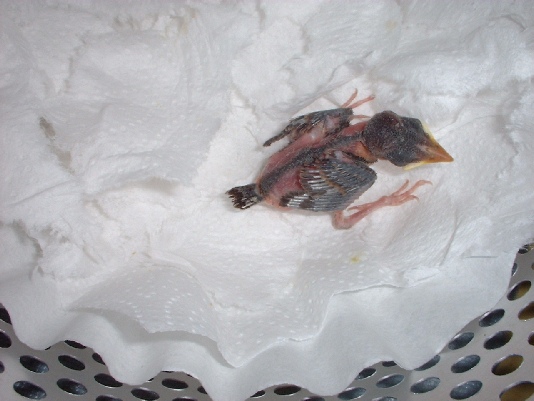
Jack’s Henhouse

Jack’s Henhouse
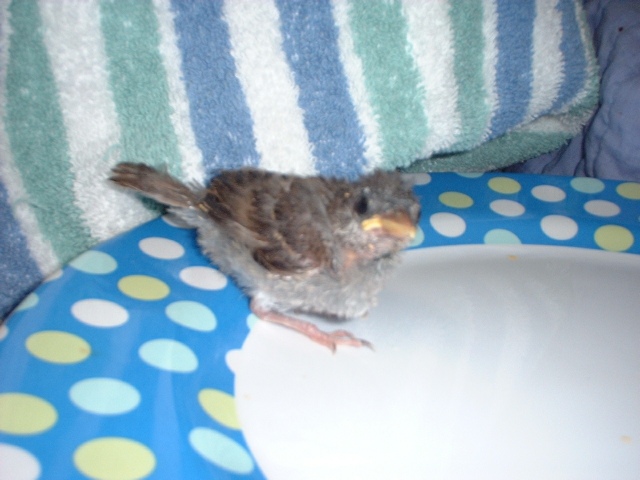
Jack’s Henhouse
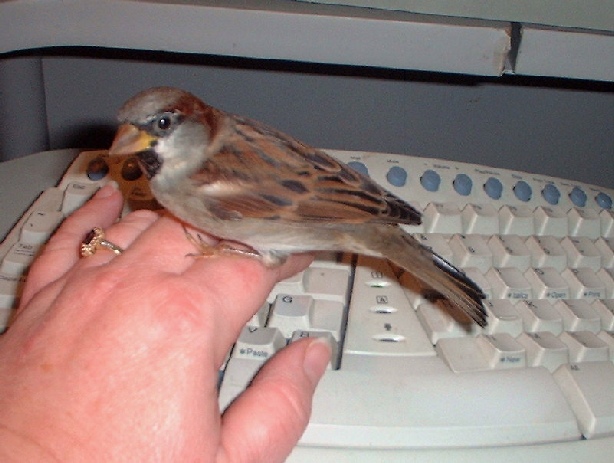
Jack’s Henhouse
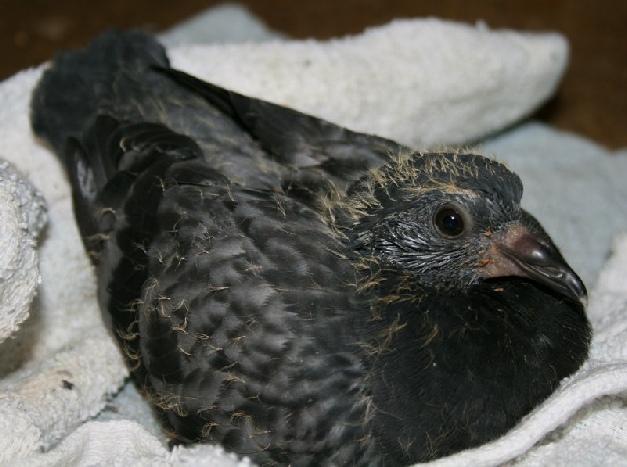
Jack’s Henhouse
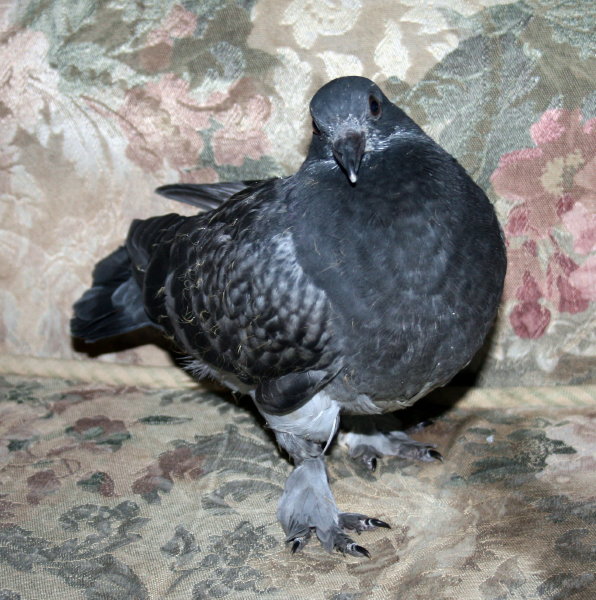
Jack’s Henhouse
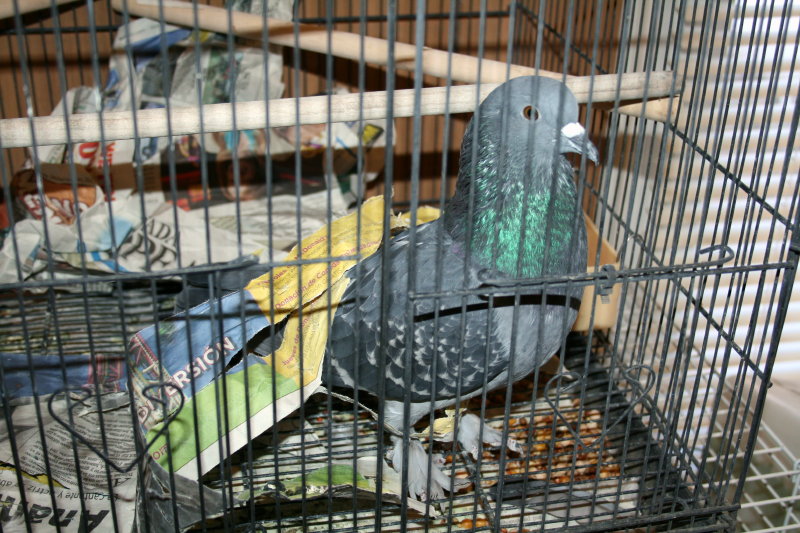
Jack’s Henhouse

Enjoying the chickens? Has my site helped you?
Want to buy the chickens some goodies?
Click the button!


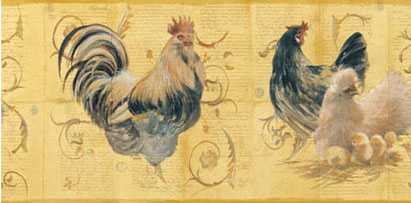
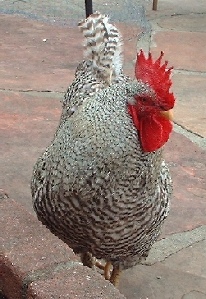 >
>

